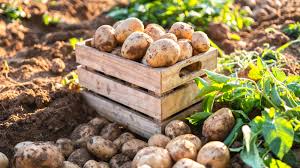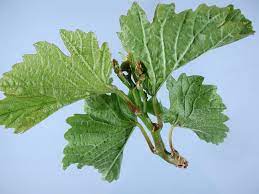Guinea Corn (Sorghum bicolor) Growing Guide, Health Benefits and Side Effects
Guinea corn (Sorghum bicolor) is a well-known grain, rich in nutrients, it is normally grinded into flour used to make bread, pancakes, and porridge. Including guinea corn in your diet, tends to offer several nutritional and therapeutic benefits.
Biologically, guinea corn is known as Sorghum, a nutritional energy inducer, due to the presence of protein coupled with a notable amount of cellulose.
However, guinea corn is popularly known in the West African region, guinea corn is widely used in the complementary feeding of babies and children because it is rich in micronutrients such as vitamins B, copper, iron, potassium, and magnesium.
This grain has a very unique nature, as it serves many purposes, in this article we’ll be highlighting a few things about guinea corn, some of its potential health benefits, its risk, and also how it can be grown, for both commercial and personal purpose.
According to our findings, guinea corn is said to contain about 163 calories per 1/4 cup servings.
Other products like sorghum flour, sorghum syrup, among many other products can be processed from Guinea Corn (Sorghum bicolor) seeds.
Read Also: Cornmeal (Corn meal) – How to Make Cornmeal and Cornmeal Recipes
Health Benefits of Guinea Corn (Sorghum bicolor)

1. Good for Colon Health
Most colorectal cancers tend to initiate and grow on the inner lining of the rectum.
However, this developmental growth of colorectal are called polyps, some of which can eventually metamorphose into cancer over time, it may even take years since the chances of a polyp turning into cancer depend on the polyp, therefore eating a high-fiber diet will reduce or mitigate every chance of colorectal cancer.
However, there are so many factors that may contribute to the growth of colorectal cancer, therefore eating guinea corn helps improve your digestive health as the high content of dietary fiber in it soothes various digestive problems like diarrhea, constipation, and bloating.
2. Good Source of Energy
Guinea corn is rich in valuable minerals, phytonutrients, and fiber, this grain provides energy because the carbohydrates in it, are the complex kind.
This grain is an excellent source of energy because it generates a steady source of fuel that comes on gradually and stays with you throughout the day.
3. Unique Protein content
Protein is an important building block for blood, bones, and much more your body needs protein to be able to make enzymes, hormones, and other body chemicals.
Protein is tagged a “macronutrient”, and the presence of protein in guinea makes it a perfect diet, so it’s advised that you should add guinea corn to your diet today since it also contributes to the growth of your body and its well being.
Read Also: Maize (Zea mays): Health Benefits, Healing Powers and Uses
4. Low Cholesterol food
Low-density cholesterol is bad because it raises the chances of health problems like stroke and heart attack in an individual.
However, guinea corn has been proven to help lower bad cholesterol levels in the blood, as well as increase the level of good cholesterol, preventing a variety of cardiovascular diseases.
5. A Good Source of Magnesium
Magnesium is the fourth most abundant mineral in the human body. It plays several important roles in the health of your body and brain.
However, you may not be getting enough of it, even if you eat a healthy diet. Guinea corn is a good source of Magnesium, a cofactor in more than 300 enzyme systems that regulate diverse biochemical reactions in the body, including protein synthesis, muscle and nerve function, blood glucose control, and blood pressure regulation.
Magnesium is required for energy production, oxidative phosphorylation, and glycolysis.
6. Rich In Manganese
Manganese helps activate many enzymes in metabolism and plays a role in a variety of chemical processes in your body.
It helps with protein and amino acid digestion and utilization, as well as the metabolism of cholesterol and carbohydrates. Manganese helps form an antioxidant enzyme called superoxide dismutase.
Antioxidants shield the body from free radicals, which are molecules that destroy or damage cells in the body.
Guinea corn is rich in Manganese which plays crucial a role in the metabolism of nutrients.
7. Weight Loss
Eating a diet rich in whole grains can reduce the risk of stroke, diabetes, heart disease and provide better weight maintenance.
Read Also: Used Cooking Oil Recycling Process: Complete Guide
Guinea Corn (Sorghum bicolor) Growing Guide
1. Land Preparation
There are some things that you need to take into consideration when starting with the planting of guinea corn.
Make sure that the site has an alkaline PH of 6.0 to 8.0, which is ideal for their cultivation.
You can also prepare the land by clearing grasses and removing debris from the soil.
2. Propagation
Next is propagation, which can be done by spreading and drilling. Plant 2 seeds per hole of 3cm depth, space them closely, and thin after 2 weeks. 3-7 kg of seeds depending on the variety is required in a hectare.
3. Weeding
Sorghum is a cereal, from the grass family so other competitors should not be allowed. Weed sorghum farm early in other to prevent pests attack. It will also help in exposing the plant to sunlight.
Weeding is an important, part of the growth of guinea since the grain/sorghum is a cereal from the grass family so other competitors should not be allowed, weeding your guinea corn farm, will help improve the growth by exposing the grain to sunlight.
Read Also: Anatomy of Fishes: Female Fish and their Reproductive Strategies
4. Fertilizer Application
Fertilizer application is optional because the grains grow even without the application of any form of fertilizer. However, you may still choose to apply a small quantity of compost manure, to increase yield.
5. Pest and Disease Control
The commonest pest in sorghum farming are; shoot fly, downy mildew, maize stem borers, bollworm, chill out borer while diseases like fungus, bacteria, and virus affect them.
Sorghum farming can also be affected by insects and diseases like fungus, viruses, and bacteria handling pests and diseases can be stressful.
However, you can employ the use pesticides and insecticides.
6. Harvesting and Yielding
It takes 4 months to mature. When the seeds turn from green to red and start drying. But the ones for grain can be allowed for 2 more weeks before harvesting.
If you press the grain with your fingers and it feels hard and unbreakable you quickly harvest them before they start falling off.
Cut the plant down with a cutlass or any sharp object and then pull them out. Dry the sorghum seeds in an open place under the sun before storing them.
One hectare will yield about 30 bags of 100 kg,2.6-2.8 tons with new techniques.
Read Also: The Amazing Benefits of Eating Breakfast in the Morning
Some Side Effects of Guinea Corn (Sorghum bicolor)
For breastfeeding mothers, if you have been eating guinea corn regularly before pregnancy, by all means, continue. But experts advise against suddenly switching to a sorghum diet during pregnancy.
If you suddenly switch from regular eating of rice to sorghum without giving your body a chance to adapt. This might lead to diarrhea or constipation.
Individuals who are allergic or intolerant to guinea corn or its products should avoid eating guinea corn.
Symptoms of a food allergy include a raised, itchy red rash, swelling of the face, eyes, lips, and tongue, and shortness of breath.
Read Also: Ways to obtain High Yield from your Maize Farm









